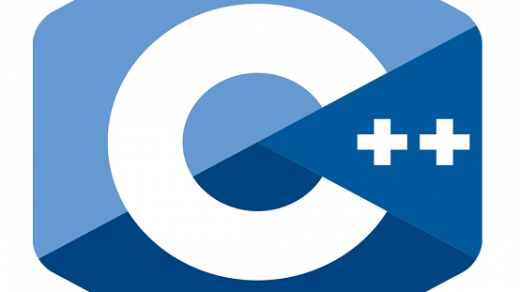The quest for Artificial Intelligence began more than 80 years ago. The idea was that computer technology was would one day be powerful enough to carry out tasks better and more efficiently than humans. Today AI has come of age. It’s already having an impact on many parts of human life from self-driving cars to finding soul mates. But perhaps its greatest impact will be on medicine and the way we monitor human health. the future of human health.
对人工智能的追求始于80多年前。当时的想法是,计算机技术有一天会强大到足以比人类更好、更有效地执行任务。今天,人工智能的时代已经到来。它已经对人类生活的许多部分产生了影响,从自动驾驶汽车到寻找灵魂伴侣。但是,它最大的影响也许将是对医学和我们监测人类健康的方式。
HOW AI WILL TRANSFORM THE FUTURE OF HEALTH CARE
The overarching goal is to bring back humanity. If we do this right, we can rescue the problems of healthcare. The doctor-patient is a founding principle of healthcare and medicine. The first step is to eliminate keyboards and computer screens and clinical encounters.
首要的目标是让人类回归。如果我们做得好,我们就能拯救医疗卫生的问题。医患关系是医疗和医学的基础原则。第一步是消除键盘、电脑屏幕和临床接触。
1.USE FOR DOCTOR’S CLINIWORK PAPER
Some doctors in the west can spend up to twice as many hours on medical paperwork than with their patients. In the years ahead, AI should be able to eliminate the data clerk, functions of clinicians. They are mutually hated as much by patients, as by doctors and clinicians. Ai tools, such as speech recognition technology that in our commonplace in homes, could be used in clinical settings for capturing data and notes, allowing doctors to concentrate on people.
西方的一些医生花在医疗文书工作上的时间可能比花在病人身上的时间多一倍。在未来几年,人工智能应该能够消除临床医生的数据文员、职能。他们是相互憎恨的,就像病人,以及医生和临床医生一样。人工智能工具,如我们在家庭中很常见的语音识别技术,可以在临床环境中用于捕捉数据和笔记,让医生专注于人。
2.USE MATCHING TO REDUCE ERRORS
Also, humans have a problem with accuracy and efficiency. Trained on a huge resource of medical data. The power of AI learning can read some images more accurately than humans. Whether it’s a pattern like a scan or a slide, or prediction, AI can rev up the accuracy. And that is important for a better diagnosis, better treatments, better outcomes, lower cost. Powerful machines can interpret scans 150 times faster than radiologists and can work 24 hours a day. Ai can even suggest a diagnosis. Many conditions could be AI diagnose. And so, the time that a doctor comes into play is very specific to important diagnoses.
另外,人类在准确性和效率方面也有问题。在巨大的医疗数据资源上进行训练。人工智能学习的力量可以比人类更准确地阅读一些图像。无论是扫描或幻灯片这样的模式,还是预测,人工智能都可以提升准确性。而这对于更好的诊断、更好的治疗、更好的结果、更低的成本都很重要。强大的机器可以比放射科医生解释扫描的速度快150倍,并且可以一天24小时工作。艾甚至可以提出诊断建议。许多情况可以由AI诊断。于是,医生发挥作用的时间对重要的诊断非常具体。
3.TREAT PATIENTS IN-HOME NOT IN HOSPITAL
Another way that AI will kick in overtime is to get rid of hospital rooms. We can monitor patients in the comfort of their own homes because they can have the sensors that would provide the same type of monitoring as if someone was in the intensive carrying it. Caring for people outside of medical settings would not only prevent hospital-acquired disease. It could also save money. All these things favor this shift, a reliance on a patient’s bedroom rather than the hospital room. We’re talking about a whole lot of people that don’t need to be employed in the hospital setting. That is a great way to reduce the burden in the future. In the United States, a hospital costs $5,000 a night, so you could get a lot of data plans that go for years for that cost.
人工智能将加班启动的另一种方式是摆脱医院的房间。我们可以在他们自己的家中监测病人,因为他们可以拥有传感器,这些传感器将提供与有人在重症监护室中携带它一样的监测。在医疗环境之外对人们进行护理,不仅可以防止医院获得的疾病。它也可以节省资金。所有这些事情都有利于这种转变,对病人的卧室而不是病房的依赖。我们正在谈论一大批不需要在医院环境中就业的人。这是在未来减少负担的一个好方法。在美国,一家医院一晚上的费用是5000美元,所以你可以用这个费用获得大量的数据计划,可以持续数年。
if the clinical community stands up for patients and says all the power efficiency, productivity, workflow from AI is going to be used to give the gift of time to doctors and nurses, and patients. That’s where we flip this thing and achieve a rescue mission for health care.
如果临床社区为病人站出来,说所有来自人工智能的动力效率、生产力、工作流程将被用来给医生和护士以及病人提供时间礼物。这就是我们改革这件事并实现医疗保健的地方。





近期评论 Recent comments